
URL: https://www.canadapost.ca/cpo/mc/personal/postalcode/fpc.jsf
The Canada Post website’s postal code finder is one of the main resources we have for confirming addresses. This section will describe different ways to use the tool in order to get the most out of it.
Leveraging the Auto-Complete Function
When checking for an address, copying and pasting the address we have into the Canada Post field is not always going to return a result, however this does not necessarily mean that the address does not exist within the Canada Post database. This can be caused by a formatting or spelling difference, as well as a difference in locality.
Example 1
Address: 5015 Yonge St, Toronto ON M2N 5P1 (Address associated with a The Keg location)

As seen above, it doesn’t appear that Canada Post recognizes the address, however it is valid. In order to get around this limitation we have to limit the number of address components we enter in the search field. Just by removing the postal code, we see more options appear:

We’re not seeing our address yet, so we keep going:

And we found it. Canada Post has this address associated with North York rather than Toronto, despite the fact that North York is officially part of Toronto. This is a common scenario for larger cities that have amalgamated nearby smaller localities.
Here’s a similar example in Montreal:
3131 Boulevard Cote-Vertu Ouest, Saint-Laurent QC H4R 1Y8 (Address associated with a shopping centre)
The full address in Canada Post fails to return a match:

Removing the locality and postal code also fails to return a match:
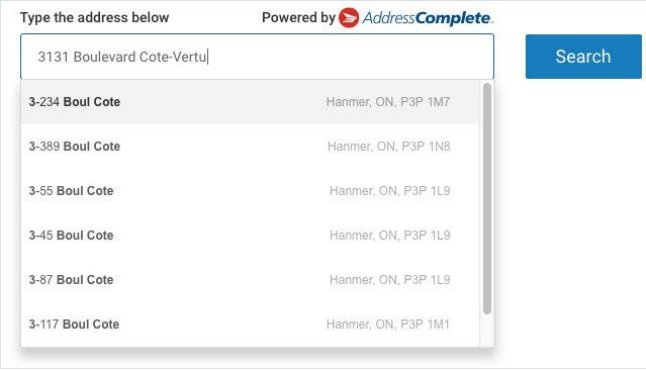
We then notice on the map that the street name is Boulevard de la Côte-Vertu so we adjust the our string:
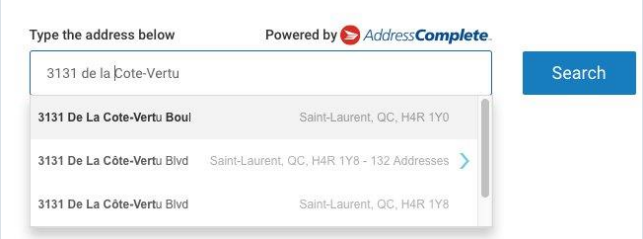
And we found the address. We see that it’s associated with the borough of Saint- Laurent which is officially part of Montreal, and that the search field is sensitive to missing articles and different formatting.
You’ll also note that there are 3 entries for this address – each refers to the same location, and the one with 132 addresses will also show unit numbers for the shopping centre at this address. Note that as per the CSG, any of these postal codes is considered correct for this address.
The Canada Post postal code finder can also be used in reverse. If we’re struggling to find an address but we have the postal code, we can enter the postal code instead to potentially find the address:

After clicking this selection to expand it:
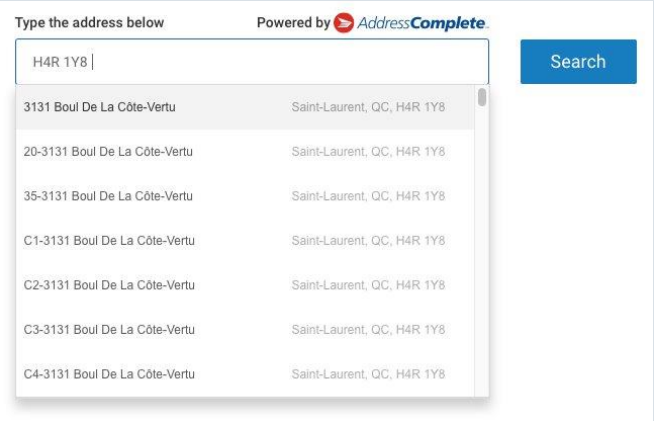
These tips should help get the most out of the Canada Post postal code finder. A few notes on limitations:
Using Canada Post to find existing addresses in Autocomplete
In the Autocomplete rating mode we often encounter query strings which are incomplete and only contain a number (ex. 3138). In this scenario we have two pieces of information, a general location of the user (Calgary, AB), and the provided query string (3138). Because we know that the best results will most likely be located in the general area of Calgary, we can include this locality in our search to find addresses which exist containing this number.
How the search looks without the locality included (Includes results all across Canada):

How the search looks when we also provide a nearby locality:

We now have information which displays the existing addresses in Calgary which match the entered string. Notice, however, that the first three results here are addresses with unit numbers that match the AC string. These are far less likely to be the user intent than addresses which exist and match, such as 3138 40 St SW or 3138 New Brighton Gardens SE.
Google Maps is commonly used to cross-check results. While it is not considered a reliable source on its own, it does serve as an excellent start point. There are a few features within Google Maps that aren’t immediately obvious but can be leveraged to help with rating.
Google Maps has a feature that allows us to search for POIs from any point on the map. This is particularly useful to check for query intent matches in the real world that may not have shown up in TryRating.
For queries where the viewport location or the user location are the location intent, we can use the coordinates for these entities to perform the search.
The coordinates show up like this in TryRating:
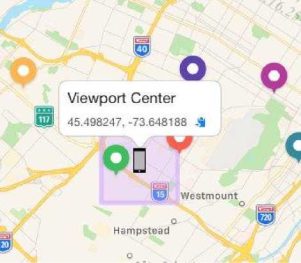

The next step is to copy the coordinates and paste them into Google Maps, and then click the Nearby button, which empties the field allowing us to write our query:
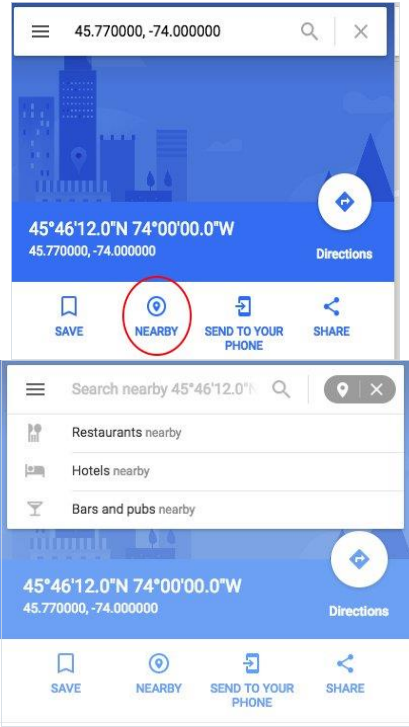
This function can also be used to search using general location modifiers specified by the user in the query. For example, if a user query is for “Hotels in Regina” we simply search for Regina SK first, then click the Nearby button. Finally if the location modifier is more specific, we can find the area first, then click anywhere within it to make a centre point from which to search nearby.
Do keep in mind however that Google isn’t flawless, always double-check information with official sources, or by combining these results with the results of other mapping providers.
Address Search in Autocomplete
Address results in Autocomplete are sometimes tricky to rate, especially when the query string is only a few numbers. We can use Google’s routing functionality to help find potential addresses that would match the string.
The first step is to open Google Maps and use the user or viewport coordinates (as appropriate for the query) as our starting point. Next we click the Directions button to start the routing function. After that, we click the two arrows to the right of the fields in order to make our original coordinates the starting point in the route. Now we can start typing the user’s query string in the destination field and see what comes up as autocomplete options within Google.
Check these destinations for validity and distance and use that to influence your rating in TryRating. While Google tries to return valid addresses, it doesn’t always succeed. Always confirm an address exists.
See the screenshots below showing the different steps. The method of transport doesn’t matter, for the screenshots it was just left as it was. Note that Google will usually resolve coordinates to an address: the coordinates in the first screenshot and the address 1225 Robinson St are both the same point on the map.
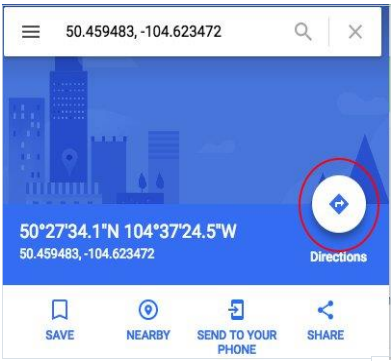
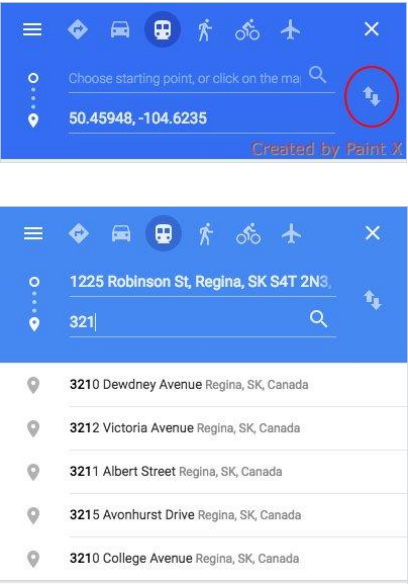
Given the mix of languages in Canada, there can be issues with finding addresses in Google when the query language doesn’t match the result language. Queries in English for results in Quebec don’t always come up and queries in French outside of Quebec don’t always come up. See the example below in a locality that has a predominantly French speaking population but is not in the province of Quebec.
French | English |
Query (French): 55 8e rue Hearst Ontario | Query (English): 55 8th Street Hearst Ontario |
Result: Hearst, Ontario | Result: 55 8th Street Hearst ON P0L 1N0 |
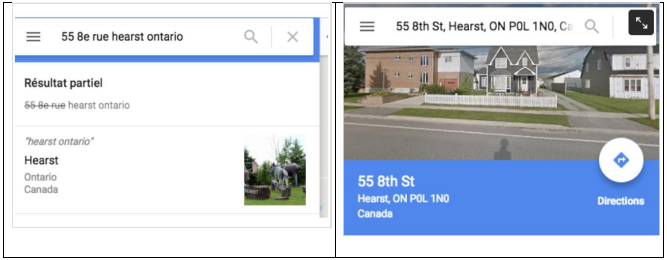
Other Map Providers
There are many map service providers out here, I’ll outline a few useful ones here:
HERE WeGo https://wego.here.com/ This mapping service can be useful for confirming street numbers. In most urban areas, they will show street numbers directly on the map.
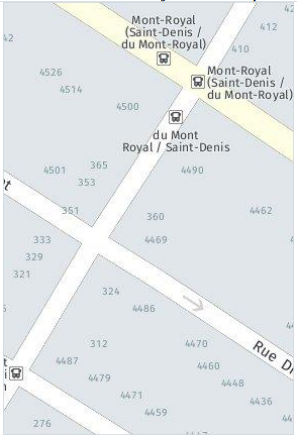
As you can see, there are no building outlines so it’s a bit lacking in precision and needs to be supplemented with other resources. HERE WeGo also does not have POI data, so it’s really mainly used to confirm street numbers when street imagery is limited. Can sometimes be useful for finding street numbers for farms, but the more rural the area, the less likely street numbers are present on the map. Note that the street numbers only apply at closer zoom levels.
Bing Maps https://www.bing.com/maps
No special functionality, but useful for cross-checking POI data and pins. It may have building outlines that other map providers don’t.
Unfortunately there is no reliable central mapping source at the government level. Different provinces will have different offerings and they are often tricky to use. Listed below are some sites that are occasionally useful for different provinces.
Note that some mapping resources will require certain plugins, such as Flash or Silverlight. If you are not comfortable with installing plugins please do your best to research the query through other means.
Any province not listed does not have readily available map viewers or similar, although every province does have datasets available for use with GIS software. This isn’t necessary for rating purposes but can be potentially interesting.
http://atlas.gc.ca/toporama/en/index.html
This can be useful for natural features in particular, as well as administrative divisions as it will usually list the name of a locality along with the above-locality that applies to it.
Cadastral data for New Brunswick, potentially useful for checking pin locations.
Uses Flash however, so it will not work in Chrome
http://www.gov.pe.ca/maps/index.php3
PEI Cadastral information. The Address Locator and Business Map are both very useful (buttons on the left)
https://geonova.novascotia.ca/map-apps
Interactive Map is available here. Potentially useful for coordinate information for addresses.
Québec
https://appli.mern.gouv.qc.ca/infolot/
Free access is sufficient for our uses. Very good for confirming rural addresses in particular, and includes property lines, etc.
http://mli2.gov.mb.ca/municipalities/index.html
The data is available for free, however it requires a download and GIS software to view, so it is not ideal for rating purposes.
https://geodiscover.alberta.ca/geoportal/catalog/main/home.page
Online Map Viewer available with a number of useful search tools. Requires Silverlight to view.
https://ltsa.ca/practice-information/online-cadastre
Online Map Viewer available with a number of useful search tools. Requires Silverlight to view.
http://www.geomaticsyukon.ca/data
Interactive map for Yukon.
Web Search Tips
This section outlines a few useful techniques when researching results. I’ll be referring to Google here, however the behaviour should be similar for other major search engines. As in any web search, how the search string is formulated can make a significant difference. Here are some examples of search strings and what kind of results they can return for rating purposes.
Business Name Search (ie: “Tim Hortons” )
A search for just the business name will generally return its official website among the first results, if it exists. Within the first page of results it should also return claimed social media pages if they exist. The downside is that it’s very broad. If we’re researching a single Tim Hortons location, the official website is a good start but is an extra step.
Business Name + first line of address (ie: “Tim Hortons 242 Westville Rd” )
This search string can be very useful for quickly locating a chain business location’s specific page. In the example provided, one of the results is the page for that specific Tim Hortons, skipping the “Find my Tims” process on their official website. For nonchain businesses, it helps disambiguate businesses that might have similar names.
Omitting the locality is often useful when an official website lists a sub-locality rather than the main locality.
Business Name + locality (ie: “Goat Coffee Toronto”)
Adding a locality to a non-chain business helps disambiguate the search for businesses that might share similar names. Not quite as useful for chain businesses with a higher density of locations, but sometimes useful for chains that are more sparsely located such as IKEA, Costco and similar.
Street Number + Street Name + Locality + Province Code (ie: “242 Westville Rd New Glasgow NS” )
This kind of search string is very useful for verifying POI addresses. If an initial search on a POI didn’t lead to any official sources or information, we can search for the address only to see if another business has that address on their website. This can be useful for confirming a business is closed. If Bob’s Burgers at 1234 Main Street is closed, their official website would be down and other official sources might be scarce, but if we perform a search on only the address, we might find a website for Jane’s Jolly Burgers that clearly lists the address we entered, allowing us to mark Bob’s Burgers as closed.